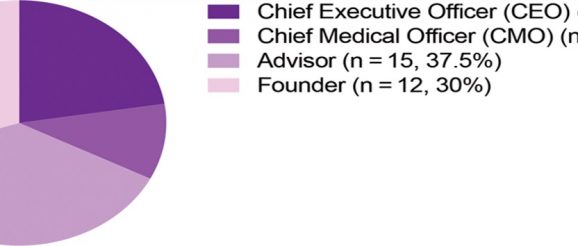Pushing the Needle of Entrepreneurship and Innovation: Where… : Plastic and Reconstructive Surgery – Global Open

d Pitchbook (Seattle, Wash.), a market database of companies and investors, for ventures that have designed innovations related to plastic and reconstructive surgery. Companies were categorized into 5 focus areas: provider (outpatient surgical or hospital entity), aesthetics (cosmetics/injectables), devices (instrumentation, lasers, implants), regenerative medicine (tissue engineering/wound healing), and software (digital solutions). Company websites, LinkedIn (Sunnyvale, Calif.) profiles, and Crunchbase (San Francisco, Calif.) were reviewed to determine the leadership roles of plastic surgeons.
Results:
Plastic surgeons primarily serve as advisors, as opposed to founders or chief executive officers (CEOs). Our analysis additionally found that provider and software solutions had a greater degree of plastic surgeon-led leadership, whereas regenerative medicine and device innovation remains less frequented. There was a relatively balanced representation of academic and private plastic surgeons in entrepreneurial pursuits.
Conclusions:
Plastic surgeons typically serve as board advisors, as opposed to founders and CEOs. Reasons for disengagement from leadership roles may include satisfaction with clinical work, time constraint, lack of business knowledge, financial constraint, and opportunity cost associated with starting a venture. To promote participation in innovation, future studies should explore tangible ways to engage in such opportunities. In doing so, plastic surgeons can own the “organ” of innovation, and continue to contribute to the legacy and the advancement of the specialty….
